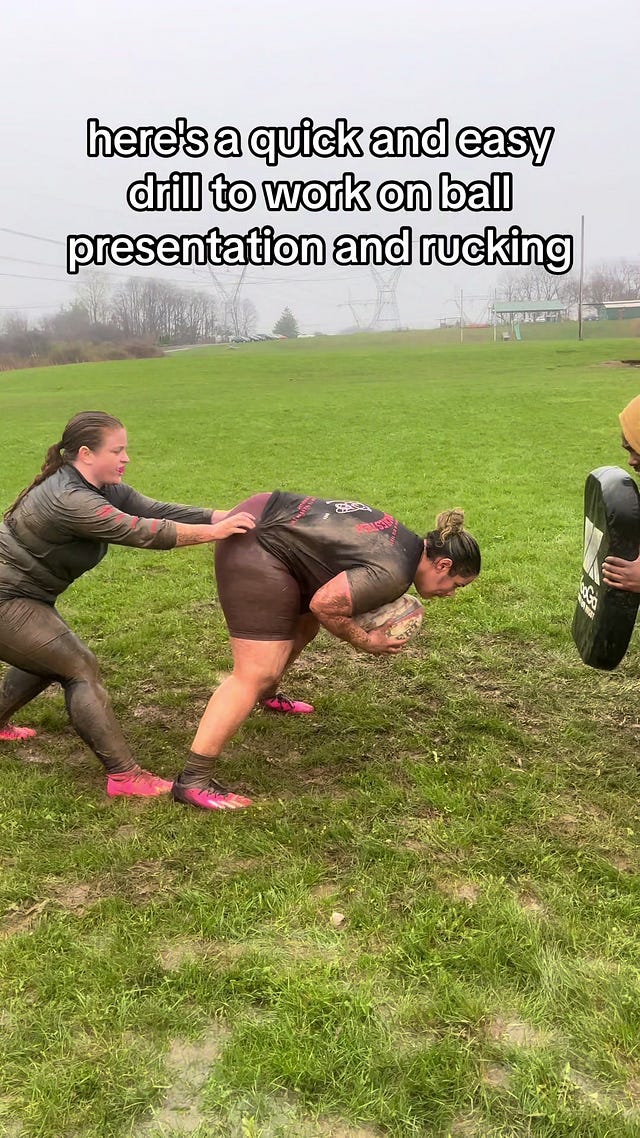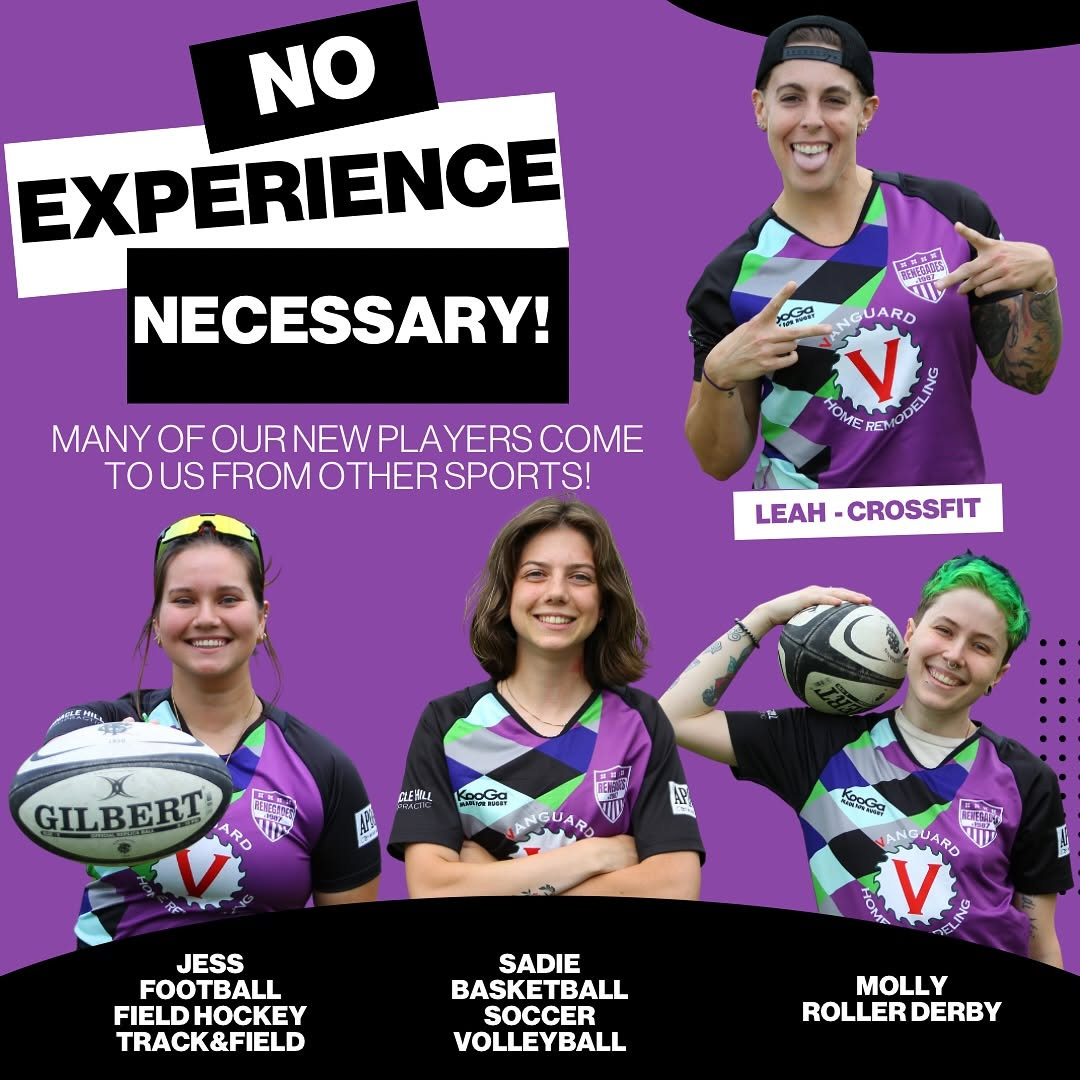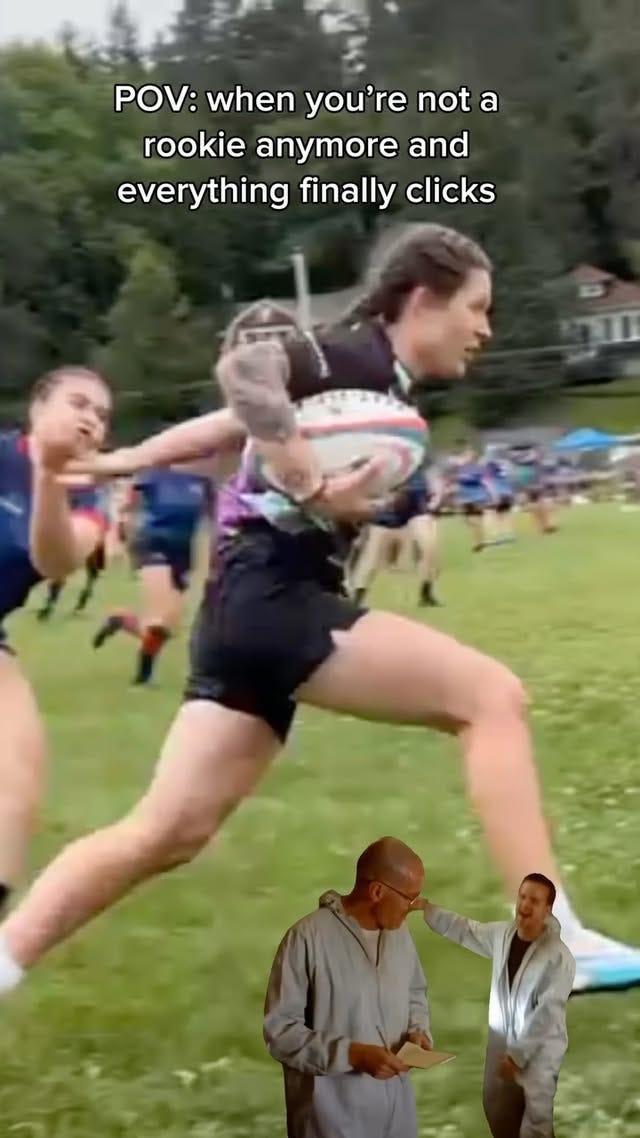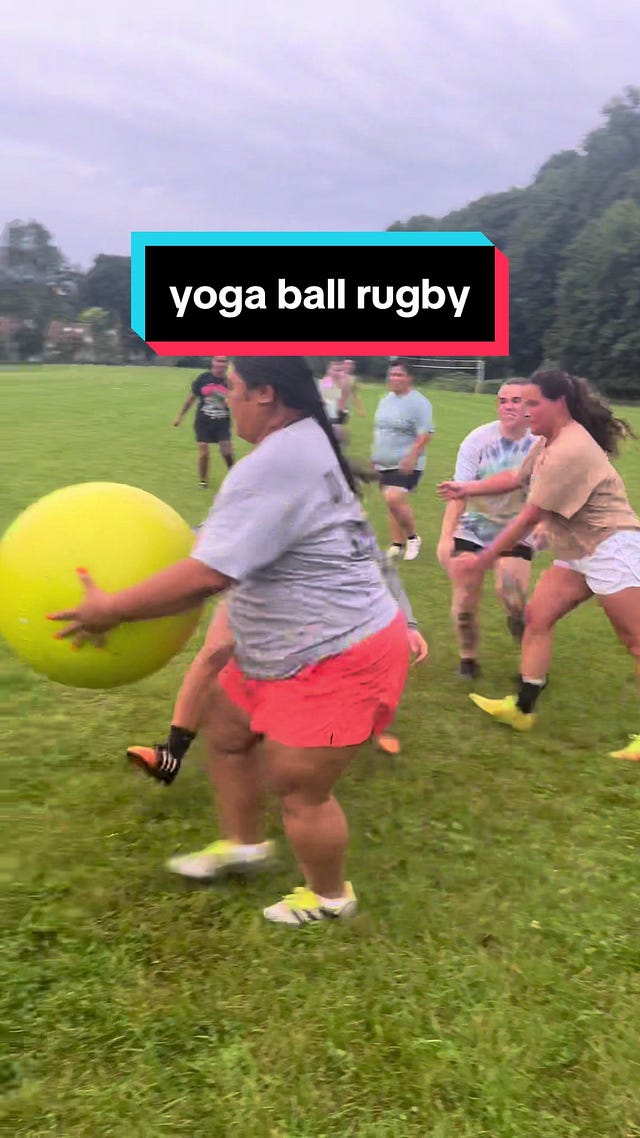How to boost your club's recruitment through social media
Kelley Bridenbaugh brought her marketing experience into her club. The result was a 300% increase in the player pool. She shares top tips for recruitment and rentention, including using targeted ads.
I had the privilege of serving as the Head Coach for the Rochester Renegades Womxn’s Rugby Club for both the 2023 and 2024 seasons.
My husband and I recently welcomed our first child in March 2025, this led to a temporary hiatus from day-to-day coaching; however, I continue to support the team whenever I can. I just can’t stay away!
How to boost recruitment using ads
Before I joined the club, recruitment efforts often involved setting up tables at a local flea market – a traditional approach that, while well-intentioned, likely had limited crossover with our ideal athlete demographic. Coming from a marketing background, I saw an immediate opportunity to try some more effective methods.
We shifted to a digital recruitment strategy using geotargeted ads. The core idea was to attract qualified leads. In this case, not just those people who knew about rugby, because that wouldn’t be many… but any athlete ready to learn.
Geotargeted ads are a highly effective paid marketing strategy that leverage platforms like Meta (Facebook/Instagram) to deliver advertisements to a defined target audience within a particular geographic radius. It allows you to reach precisely who you want, where they are, when they're most receptive.
We designed compelling ad creatives with hooks like 'Calling all Rochester area athletes!' and targeted females aged 18-30 within a 25-mile radius of Rochester.
What's powerful about Meta ads is the ability to get granular: we further refined our audience by adding interests in other crossover sports like soccer and basketball. People interested in working out, fitness, etc.
This ensured our small advertising spend was efficient, reaching individuals far more likely to be interested, and saved our dedicated players countless hours at weekend flea markets.
It's surprisingly straightforward to use these ads and, in my opinion, an essential growth strategy for any club looking to expand its reach. First, you need a compelling visual– tools like Canva offer excellent templates, so you don't need a professional designer.
Then, it's about defining your target audience clearly, setting your geographic radius, and, crucially, establishing a budget. We saw significant results with a modest $100 ad spend over a 10-day campaign, averaging just $10 a day.
Timing is also important to think about. We launched our campaigns just before the season started, when fundamental skills were being covered, making it less intimidating for new players. It can be helpful to offer a low-barrier-to-entry opportunity for new recruits, like an open captain's practice or a rugby 101 session, to convert interest into participation.
Beyond the ad, the follow-up process is critical. Ensure your team is prepared to respond quickly to inquiries – set up automated FAQs, but then also prioritize fast, personalized replies while your club is top-of-mind.
This is where having a social media committee can be helpful to split up the responsibilities.
Recruitment and retention tips
While all tactics played a role, the geotargeted Meta ads were undoubtedly the most impactful for generating high-quality leads. Not only did they bring in fantastic prospective players for our womxn's team, but they also generated leads for our youth programs and the men's teams in the area, helping grow the game in general.
It requires a relatively modest budget to gain significant exposure; however, before investing, ensure your website is fully updated and your ad creative is compelling and speaks directly to your target audience.
Most importantly, have a clear, low-stakes event or practice planned for these prospective players to attend once they reach out – converting interest into actual participation is key.
While recruitment fills the top of the funnel, retention is where the true longevity of a club lies. Natural attrition will always occur due to life changes, injuries, or retirements, which is why a consistent recruitment pipeline is crucial.
However, the methods we discussed, especially the social media committee, play a role in retention by fostering club culture and community.
A strong, visible, and inclusive culture is what makes players want to keep coming back. It’s about creating a sense of belonging to something bigger than themselves.
When players feel connected and valued, they naturally become advocates for the team, leading to word-of-mouth recruitment and a powerful compounding effect that sustains the club for years.
Setting up a social media committee
Initially, I managed the club's social media, primarily focused on game day graphics and score updates. However, after a TikTok video showcasing a practice drill unexpectedly went viral within the rugby community, I recognized the potential. It was a great way to showcase our team for local athletes interested and engage with the global rugby community at the same time (follow us @RenegadesWRFC).
It became clear that consistent content was too much for one person, especially when that one person was me and I was also planning and running practices.
We started by encouraging anyone interested to share content ideas, and this organic interest quickly evolved into a dedicated Social Media Committee. This committee provided a centralized hub (aka group chat) for content planning, filming, and creation.
The real power lies in the diversity of algorithms within the group; while I might see more coaching-centric content, our players bring a wealth of trending, relatable ideas that reflect our team culture and personality. It fosters collaboration and ensures a fresh, dynamic feed.
Plus, building a strong social media following became an asset when we started looking for sponsorships. The more eyes we had on our club, the more appealing we became to local businesses. Imagine a local restaurant seeing the value in having their logo featured on our highly visible game day graphics, reaching all those fans and followers!
Our social media reach essentially turned into a really compelling pitch for new sponsorship opportunities, helping us keep the club financially healthy and growing.
Having a dedicated Social Media Committee was a total game-changer for two big reasons.
First up: sustainability. It's just not realistic to expect one person to constantly come up with, film, edit, and post awesome content without burning out (remember for most of us rugby is happening OUTSIDE of our regular jobs).
A committee spreads out that work, making sure we get a steady stream of fresh, diverse stuff without overwhelming anyone.
Then, there's authenticity and reach, which, honestly, might be even more important. A committee lets us truly show off our club's personality and culture through everyone's unique lens.
It's like giving people a real 'sneak peek' behind the scenes at what it’s like to be a Renegade.
My advice to any club wanting to form a social media committee is to just start asking people. You might kick things off with just two passionate individuals, but as soon as you start filming and posting content, that energy becomes infectious.
Others will naturally jump in with ideas and want to join. And try to be consistent, even if you can only post once a week, make sure you stick to that!
Getting your club’s website right
For any club's website, the primary goal is to be a clear, accurate, and up-to-date information hub.
Crucially, there must be a prominent and frictionless Call-to-Action (CTA) button on the homepage. For most clubs, this can be something simple and direct like 'Contact Us,' 'Learn More,' or 'Join Our Team.'
As for key information, absolute must-haves are current practice times and locations. This empowers prospective players to take action without needing to reach out first, reducing friction in the recruitment funnel.
Beyond that, consider sections like 'About Us' (your history, values), 'Coaching Staff,' 'Game Schedule,' and 'Why Rugby?' to build interest.
When approaching a website update, the most vital tip is to adopt a user-centric perspective. Put yourself in the shoes of a prospective athlete who has never heard of your club.
Better yet, have an impartial outsider navigate your site. Assess the user journey: how many clicks does it take to find key information like 'How to Join' or 'Meet the Coaches'? Is the navigation intuitive and seamless?
For sustained success, it's critical to assign ownership of the website. We have a dedicated 'Webmaster' role (which was me at the time) responsible for content updates and ensuring all information remains current and accurate.
A well-maintained, user-friendly website is an important asset for any club's brand and recruitment efforts.
Knowing your club’s USP
Our club's Unique Selling Proposition (USP) is multifaceted. Geographically, we hold a significant advantage as the only womxn's rugby club in the Rochester area.
This provides a 'geographic monopoly' for any woman or non-binary player looking to try rugby, unlike, for example, Buffalo, a nearby city which has three womxn's clubs. When they recruit they have the extra hurdle of needing to set themselves apart from the other two clubs.
Beyond geography, our club's rich history and deep-seated pride are key differentiators. Established in 1987, we have a strong connection with our 'old girls' network. This legacy is a core part of our club culture, and we actively feature it on our website and social channels as an aspect of our brand identity.
For other clubs looking to identify their USP, I'd advise a deep dive into what truly sets them apart: Is it a unique coaching philosophy? A strong competitive record? An incredibly inclusive social environment? A specific community focus?
The key is to be authentic and communicate that distinct value proposition clearly to your target audience.
Let’s remember to share the love
If you're looking to recruit for your team, it stems from a love for your team. Tap into that genuine passion. Take a moment to articulate why you love your team and why you joined rugby.
Use those authentic reasons to craft your messaging. If your club thrives on being a fun, social-first club, embrace that in your ad copy (e.g., 'Make new friends and drink beer!'). If you're focused on being more competitive, tailor your visuals and messaging to attract more serious athletes.
In today's digital landscape, everyone is on their phone. It's a missed opportunity not to leverage that to your advantage by creating targeted ads that land directly in the hands of potential future players.
It doesn't require a massive time commitment or large budget, and with the right follow-up procedures and a welcoming first practice, you'll be well on your way to success.
Examples of social media posts using video
Here are some links to our best-performing social content. The coaching content seems to do better on TikTok, while the rugby "meme"/ CapCut videos seem to do better on Instagram.

 Tiktok failed to load.
Tiktok failed to load.Enable 3rd party cookies or use another browser
Did you know there’s a subscription option for Coaching Care Creativity? Nothing is behind a paywall so your subscriptions or coffee clicks can help keep the content going. The subscriptions are £5 a month or £50 for the year. You can also buy me a one-off coffee for just £5.








